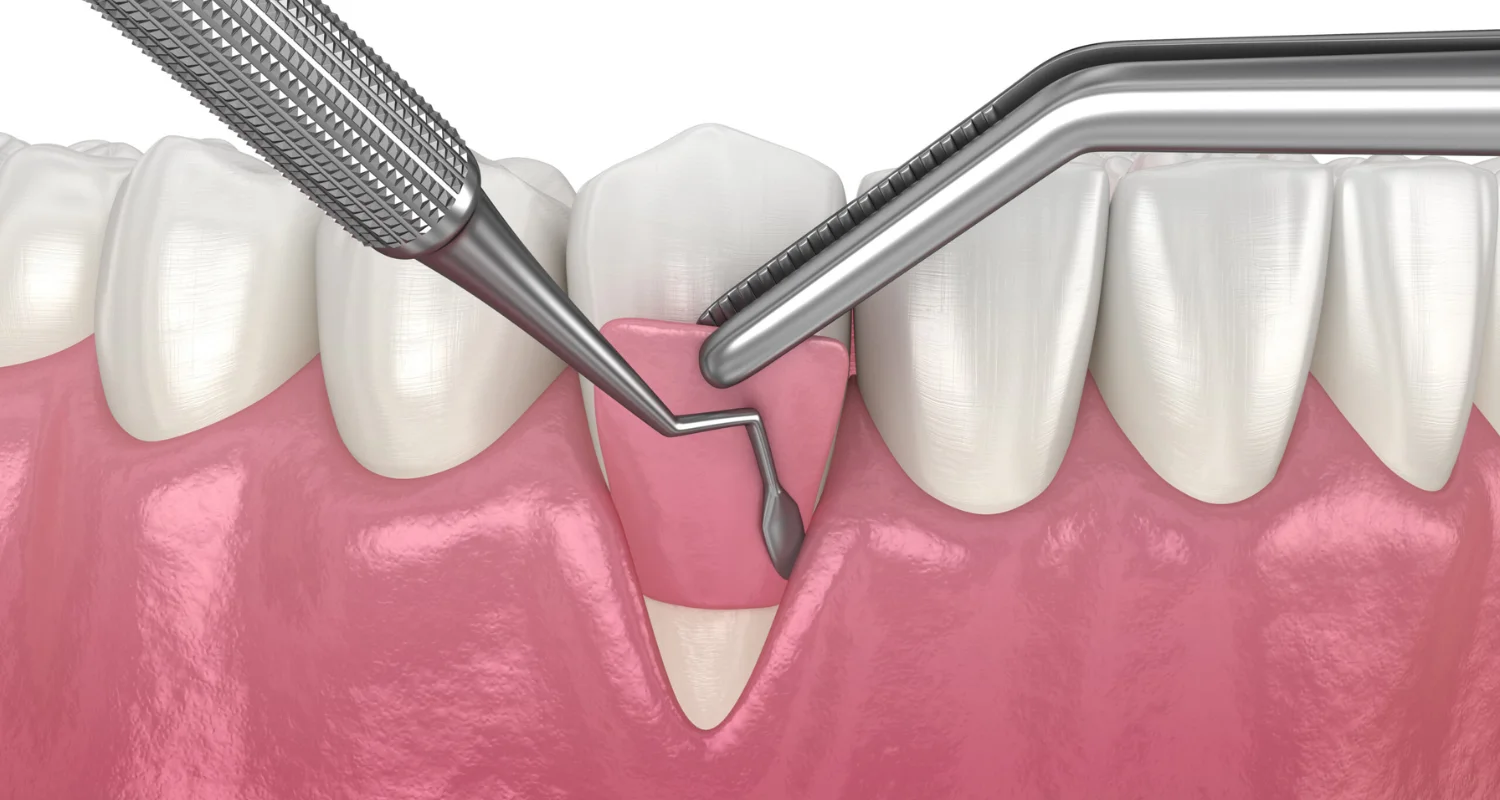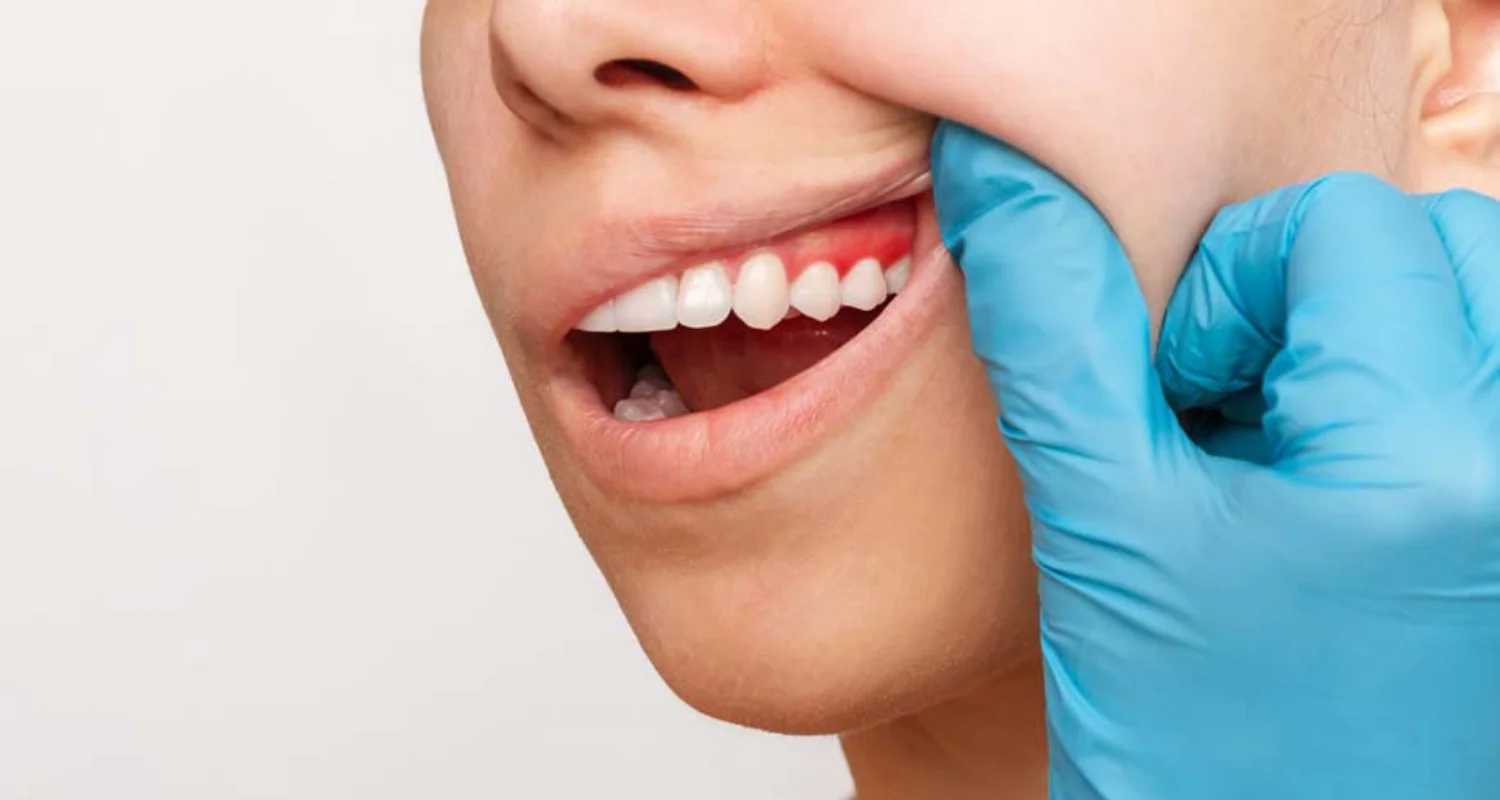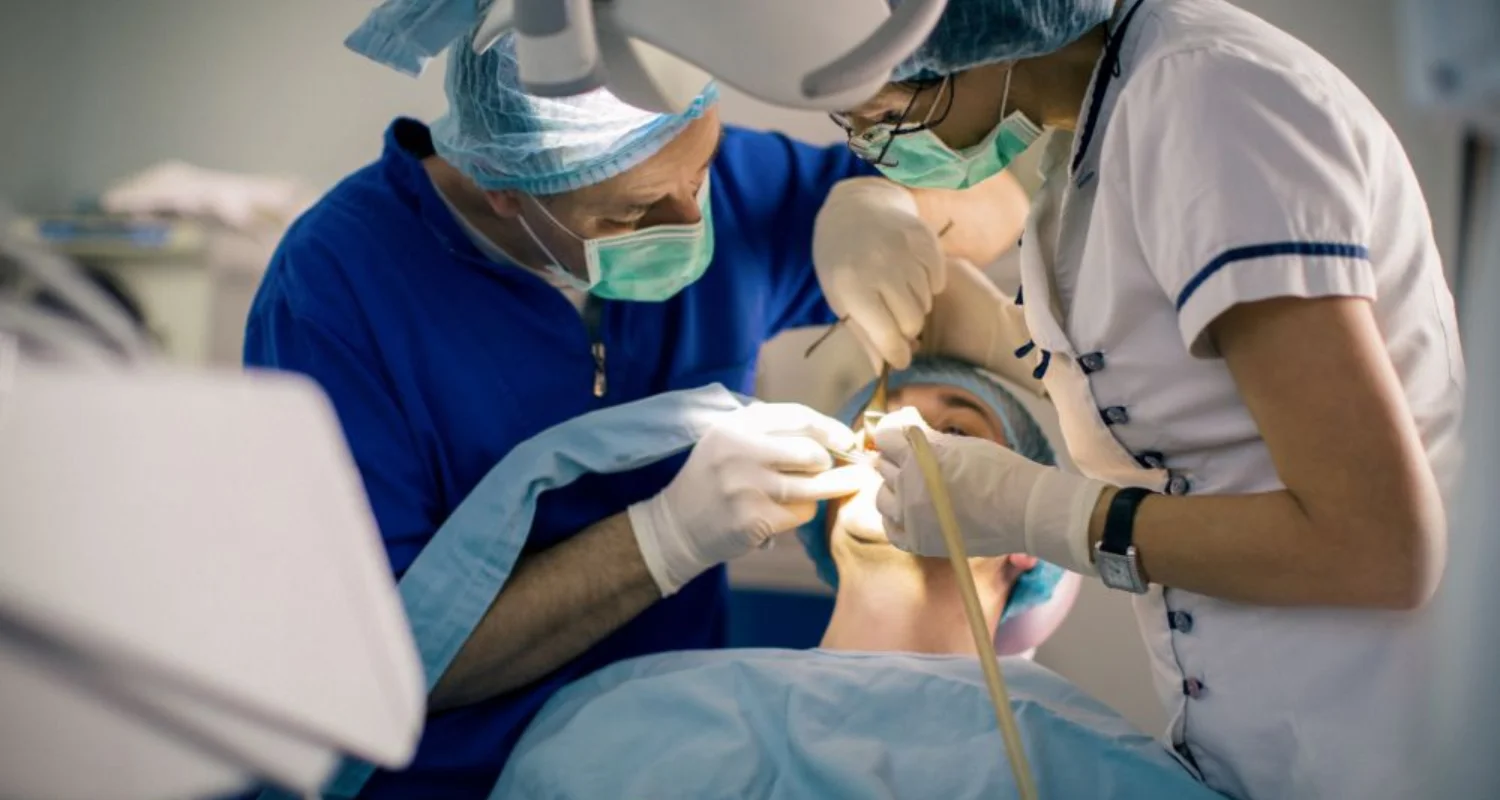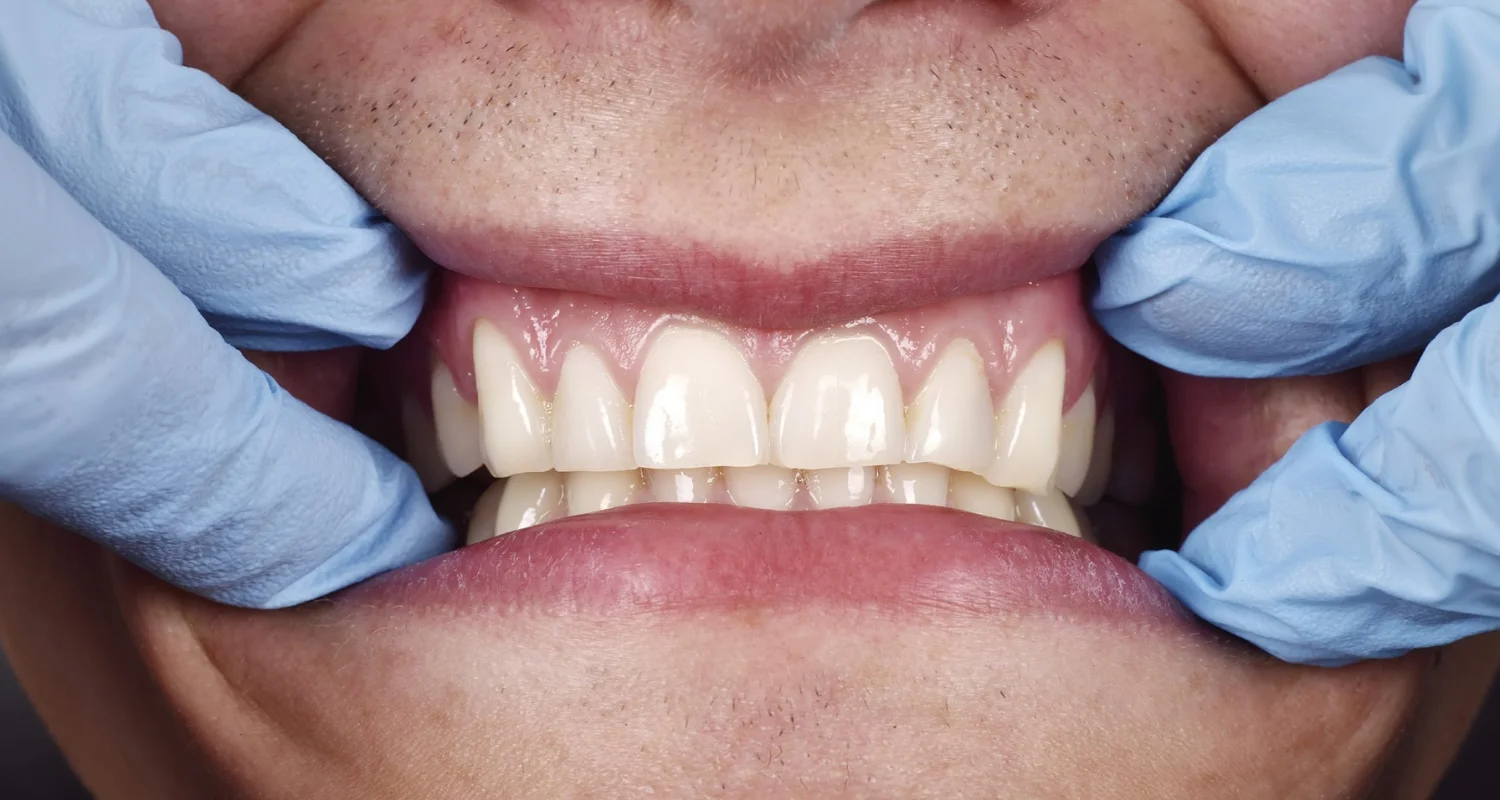Last Updated on: 19th September 2025, 12:36 pm
In most cases, gum graft surgery is a common dental procedure used to treat gum recession, where the tissue pulls back. In turn, this exposes the sensitive roots of teeth, which can lead to increased sensitivity, discomfort, and risk of decay or further gum disease. Gum grafting restores the protective gum layer and strengthens the line of the gums, ensuring both improved oral health and aesthetic appearance.
This article offers a comprehensive overview of gum graft surgery, describing who should undergo it, how the procedure is performed, with practical tips for recovery to ensure the best outcome.
A look at the gums
The gums, also known as gingiva, are essential for oral health as they guard the teeth and underlying bone from bacteria and external triggers, forming a protective seal. Due to poor oral hygiene, aggressive brushing, periodontal disease, hormonal changes, teeth grinding, etc, gum recession or shrinking of the gums can take place, exposing the tooth roots leading to sensitivity, decay, and compromised aesthetics.
This is where gum graft surgery comes into play; it covers the exposed tooth surface with soft tissue while restoring a natural smile.
What is gum graft surgery?
Gum recession is one of the most common dental problems, affecting approximately 4% to 12% of adults; it is often asymptomatic until the advanced stage. Your dentist may suggest a gum graft to save your teeth from further damage or improve the aesthetic appearance of your smile.
In this procedure, gum tissue is taken from another area of your mouth and placed over the receding areas. It has been known to reduce the advancement of gum disease and help increase the aesthetic appeal of your smile.
How Is the Gum Graft Procedure Performed?
Gum graft surgery is a routine procedure designed to restore receding and thinning gums, protect the teeth, and enhance your smile. While the specifics may vary based on the type of graft and individual patient needs, the procedure generally follows a standard approach. Keep reading to learn more!
Types of Gum Graft Surgery
● Autograft
An autograft uses tissue from the patient’s mouth, typically harvested from the palate (roof of the mouth). This method is commonly preferred as it minimizes the risk of tissue rejection and promotes natural integration. This approach includes free gingival grafts, connective tissue grafts and pedicle grafts; its use depends upon the patient’s personal needs.
● Allograft
In an allograft, donated tissue from a tissue bank is used as the graft material. This option eliminates the need for harvesting tissue from the patient’s mouth, making the surgery less invasive.
● Xenograft
A xenograft involves using tissue from an animal source, often porcine (pig-derived). This type of graft is widely used due to its ready availability and biocompatibility. Like allografts, it avoids the need for a second surgical site.
The Surgical Process
During the procedure, your periodontist will perform the following:
1. Administer local anaesthesia: Numbing of the area ensures that you won’t feel any pain. You may be offered the option to use nitrous oxide, oral sedation, or IV sedation. You will discuss this with your periodontist when you have your first consultation.
2. Prepare the site: Once comfortable, your periodontist will make a small incision in the gum to make a flap and then thoroughly clean the roots of the tooth that lie beneath.
3. Harvest the gum graft: Now, the dentist will take a small piece of tissue from the inner part of the roof of your mouth, leaving the outer layer intact. The donor site will be closed with sutures or a periodontal dressing. If donor tissue is used, this step will be skipped.
4. Position the graft: The graft will be placed over the exposed tooth roots in the area of gum recession.
5. Secure the graft: The gum tissue will be repositioned with stitches that will dissolve on their own or need removal after a follow-up visit.
6. Give a periodontal dressing if required: If necessary, after the graft is secured, the donor site will be closed with sutures and a protective dressing will be applied. Also known as periodontal dressing/ gum graft putty, this will act as a barrier to protect the surgical site, minimize discomfort, and promote healing. Non-eugenol dressings are currently the most widely used periodontal dressings along with commercially available options like Coe-Pak, Cross Pack, Peripac, etc. Your dentist might decide according to your individual needs.
How long does gum graft surgery take?
The duration of gum graft surgery depends on the extent of gum recession and the number of teeth involved. For a single tooth, the procedure usually takes about an hour. However, if multiple teeth in different areas of the mouth are involved and require grafting, the surgery may take significantly longer to ensure that each graft is placed accurately and securely.
The expected time will be assessed by your periodontist and explained during your consultation appointment.
Who Might Need Gum Graft Surgery?
Gum graft surgery is recommended for individuals experiencing gum-related issues that compromise oral health, comfort, or aesthetics. The procedure addresses several underlying conditions, with specific indications guiding its necessity, such as:
● Gum recession
Gum recession occurs when the gum tissue surrounding the teeth begins to wear away, exposing the tooth roots. Several factors such as genetics, aggressive brushing, chronic periodontal infections and orthodontic issues may cause the condition. This can lead to increased susceptibility to decay, infection, and even tooth loss, if left untreated.
● Tooth sensitivity
Exposed tooth roots, resulting from gum recession, often lead to heightened sensitivity. Unlike the enamel-covered crown, the roots lack protective layers, making them vulnerable to external triggers.
● Cosmetic concerns
Receding gums can create an uneven gum line, making the teeth appear longer and the smile less appealing. Gum graft surgery can restore balance to your smile to boost your self-confidence.
Other Indications for Gum Graft Surgery
● Preventing further damage: In early stages, a graft can halt gum recession progression and protect tooth roots.
● Preparing for dental restorations: Ensuring adequate soft tissue coverage and contours for procedures like crowns, implants, or bridges.
● Improving oral hygiene: Covering exposed roots to eliminate crevices that are difficult to clean and prone to bacterial buildup.
Pros and Cons of Gum Graft Surgery
Pros: Gum grafting provides numerous benefits, such as:
● Lowering the risk of gum disease.
● Reducing the likelihood of cavities, a exposed tooth roots are more prone to decay.
● Alleviating tooth sensitivity.
● Enhancing the overall appearance of your smile.
Cons: Although complications are rare, they can definitely occur. Potential issues include:
● Infection.
● Excessive bleeding.
● Graft rejection or failure.
If you experience significant bleeding, pain, signs of tooth infection like pus discharge, or anything unusual, contact your dentist promptly.
How to Prepare for a Gum Graft Surgery
Preparatory measures are vital in enhancing the chances of a successful gum graft surgery as well as ensuring a trouble-free recovery. Your periodontist will conduct an initial evaluation and give you instructions that must be followed before going into surgery.
Below is an overview of the key steps to prepare for the procedure:
Initial evaluation:
During the first consultation, your periodontist will assess the extent of gum recession, find out if surgical intervention is necessary, and then suggest the most appropriate graft. A brief medical history will also be taken, including your medication history.
Instructions before going into surgery:
Your periodontist will give you the following instructions to help lessen any risks:
● Diet: Do not consume food or drinks prior to the procedure.
● Medication: You might be asked to stop any blood thinning medications prior to the procedure following your physician’s consent.
● No Smoking: Refrain from smoking before and after the procedure to maximize proper healing.
● Hygiene: Maintain proper oral hygiene by brushing and flossing your teeth before undergoing surgery to reduce the risk of infection.
● Transportation: Arrange for a ride home in case sedation or anaesthesia is used.
Recovering After Gum Graft Surgery
What to expect post-surgery
● Swelling and discomfort: Mild swelling, discolouration and discomfort are common in the first few days; this can be managed with cold compresses and prescribed medications.
● Bleeding: Slight bleeding may occur initially, but it usually subsides within 24–48 hours.
● Sensitivity: The grafted and donor sites may feel sensitive to temperature changes or touch.
● Gradual healing: Gums begin healing within a week, but full recovery may take a few weeks to several months.
Healing usually lasts 1–2 weeks, during which time the graft embeds within the gum tissue. Post-operative instructions play an important role in ensuring a smooth and speedy recovery after surgery.
Tips for a smooth and speedy recovery
● Stick to soft foods: Consume soft food items that don’t require much chewing. Avoid foods like nuts, even if they have some benefits.
● Avoid hot foods and drinks: they can irritate the surgical site; therefore, avoid them.
● Take prescribed medications: Follow your dentist’s instructions for pain relief and infection prevention.
● Limit physical activity: Avoid strenuous activities for a few days to prevent bleeding or discomfort.
● Attend follow-ups: Regular check-ups ensure proper healing and address any concerns promptly.
What to Eat After Gum Graft Surgery
Proper nutrition after gum graft surgery is very important. A carefully-chosen diet protects the site from trauma, reduces pain, and promotes faster healing. Here is a guide on what to eat and avoid post-surgery:
● Liquids and soft foods: Stick to easily consumable options like scrambled eggs, broths, yogurt, smoothies, and mashed potatoes. These foods are easy on the surgical area and do not need chewing.
● Soft fruits and vegetables: Opt for soft, nutrient-dense options like bananas, avocados, applesauce, and steamed or pureed vegetables. These foods provide crucial vitamins and minerals that boost tissue healing without straining the gums.
● Avoid alcohol and irritating foods Avoid alcohol as it may impede the healing process. Avoid spicy, salty, or acidic foods, such as citrus fruits and pickles, that may irritate the surgical site and delay recovery.
● Avoid hard, crunchy, or sticky textures: Avoid foods with hard, crunchy, or sticky textures, such as chips, nuts, seeds, candy, or bread with tough crusts; they may damage the graft and dislodge the stitches.
How to Know if the Procedure has Failed
Dental gum graft failure may be known by the following signs and symptoms:
● There is pus around the surgical area, possibly indicating infection.
● Fever, which would your body’s natural response to infection
● Pale or discolored graft tissue, which can be caused by poor blood supply or even tissue death
● Persistent pain or unusual swelling over the healing period.
If you observe any of these symptoms, consult your dentist or periodontist right away for evaluation and treatment.
When is it too Late for Gum Graft Surgery?
In cases of severe gum or bone loss and mobile teeth, gum graft surgery may not be possible. Extensive damage can limit the ability to secure and sustain the graft tissue. Your dentist will thoroughly evaluate the condition of your gums and underlying bone structure to determine your suitability for the procedure.
If gum grafting isn’t possible, alternative treatments or procedures may be recommended to address your oral health concerns effectively.
Gum graft surgery is a highly effective solution for treating gum recession, restoring oral health, and improving the overall appearance of your smile. By understanding the procedure, preparing adequately, and following post-operative care instructions, you can expect a smooth recovery and promising results.
Frequently Asked Questions
Is gum graft surgery painful?
Gum graft surgery is generally not painful given that local anesthesia is used during the procedure to numb the area. After the surgery, you might feel some discomfort or soreness, but this can usually be manageable with pain medication, either prescribed or over-the-counter, along with proper post-operative care.
Can my receding gums grow back?
Receding gums do not grow back on their own. A gum graft is often needed to restore lost gum tissue, protect the roots of your teeth, and improve the appearance of your smile.
What is it like to get a gum graft?
The procedure involves taking tissue, usually from the roof of your mouth or a donor source, attaching it where the gums have receded. Thanks to local anesthesia, you won’t feel pain – only some pressure. After the surgery, you’ll need to follow care instructions, like avoiding certain foods and being gentle when cleaning your teeth to help with healing.
How do we know if the gum graft is failing?
Signs of a failing gum graft may include persistent pain, excessive swelling, bleeding, or the tissue not integrating properly with the surrounding gum. If you notice any unusual symptoms, it’s important to contact your dentist or periodontist promptly.
Can you repeat a gum graft?
Yes, it is possible to perform a second gum graft if needed. However, the outcome will depend on factors like the health of your gums, the reason for the original gum recession, and a thorough evaluation by your dentist and periodontist.
Share
References
1. Bottaro, A. (2024, May 1). Periodontal (Gum) Surgery: Everything You Need to Know. Verywell Health. Gingival recession. The Journal of the American Dental Association, Volume 138, Issue 10, 1404. https://www.verywellhealth.com/periodontal-gum-surgery-8638999
2. Jewell, T. (2017, May 2). Gum Tissue Graft: Why It’s Needed and What to Expect. Healthline. https://www.healthline.com/health/dental-and-oral-health/gum-graft
3. Kassab, M. M., Badawi, H., Dentino, A. R. (2010). Treatment of gingival recession. Dental clinics of North America, 54(1), 129–140. https://doi.org/10.1016/j.cden.2009.08.009
4. Marks, H. (2023, September 20). Gum Tissue Grafts. WebMD. https://www.webmd.com/oral-health/gum-tissue-graft-surgery
-
Nayibe Cubillos M. [Author]
Pharmaceutical Chemestry |Pharmaceutical Process Management | Pharmaceutical Care | Pharmaceutical Services Audit | Pharmaceutical Services Process Consulting | Content Project Manager | SEO Knowledge | Content Writer | Leadership | Scrum Master
View all posts
A healthcare writer with a solid background in pharmaceutical chemistry and a thorough understanding of Colombian regulatory processes and comprehensive sector management, she has significant experience coordinating and leading multidisciplina...






















